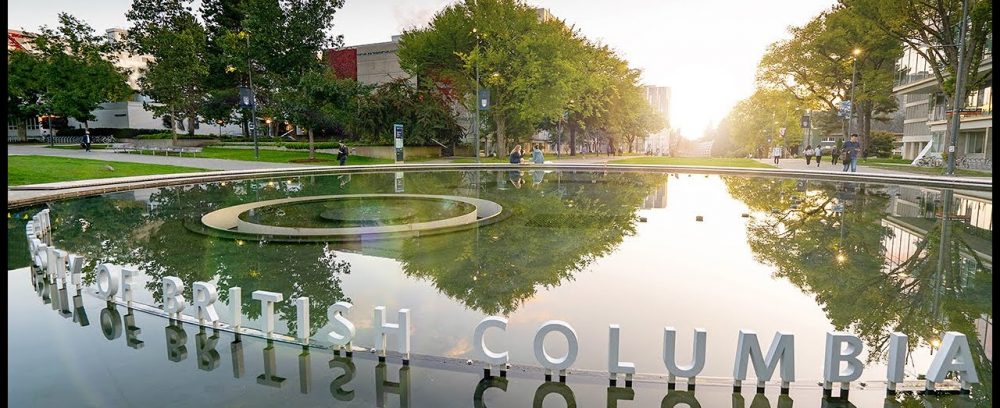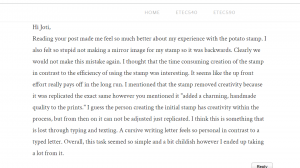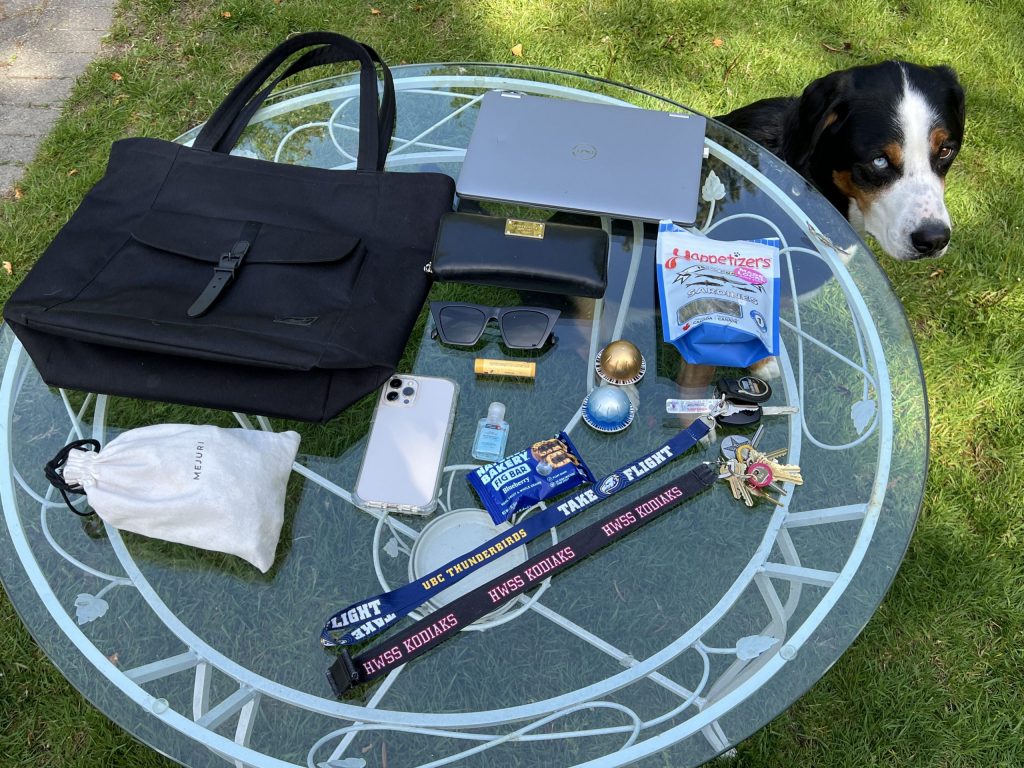I was drawn to Shannon’s blog because it was visually appealing, easy to navigate, and told me immediately what her story was about. I find it hard to engage with material that I do not connect with however, in Shannon’s oral story she spoke about her dog. I also appreciated that we had similar experiences with the task while she also made points that I had not thought of. In a course that is exclusively online, I enjoyed looking at someone else’s work to see what their MET experience looks like.
I chose to respond to Joti’s post because it was similar to my experience in a way that made me feel more comfortable in this course. I think it is easy to doubt yourself sometimes. I made an error with this potato stamp and although it was a very small and seemingly silly error, I found that reading Joti’s similar experience made me feel connected to my peers. Since this course is entirely online and there are no standard discussion forums I enjoyed reading peoples blogs in order to feel a part of the great group.
Link 3 https://jotisingh.weebly.com/tasks/mode-bending#comments
I commented on Joti’s post because I thought it was really creative and I had not used the tool she chose before. I also thought that she spoke to a practical side of the task which resonated with me and my daily life as a teacher. Her combination of multimodal elements, such as audio and interactive components, highlighted innovative ways to enhance student engagement and communication. This approach aligns with my interest in exploring new digital tools and methods to enrich my teaching. Additionally, Joti’s reflections on the technical and cultural aspects of the task provided valuable insights into how these strategies can be applied effectively in an educational setting, prompting me to consider how I might incorporate similar techniques into my own work.
Link 4 https://blogs.ubc.ca/texttech540/2024/08/04/task-12-speculative-futures/#comment-15
I wrote this comment because Lachelle’s story really hit home for me. The way it showed a future where climate disasters have isolated people and limited real human interaction made me think about my own fears about environmental collapse. It reminded me of how isolated and disconnected many of us felt during COVID-19, where virtual connections often felt hollow in comparison to in-person interactions. Reading her story made me realize how important it is to appreciate and make the most of our ability to connect with people face-to-face. It’s a good reminder of what we might lose if we don’t take care of our environment and to appreciate the freedoms we can often take for granted.



